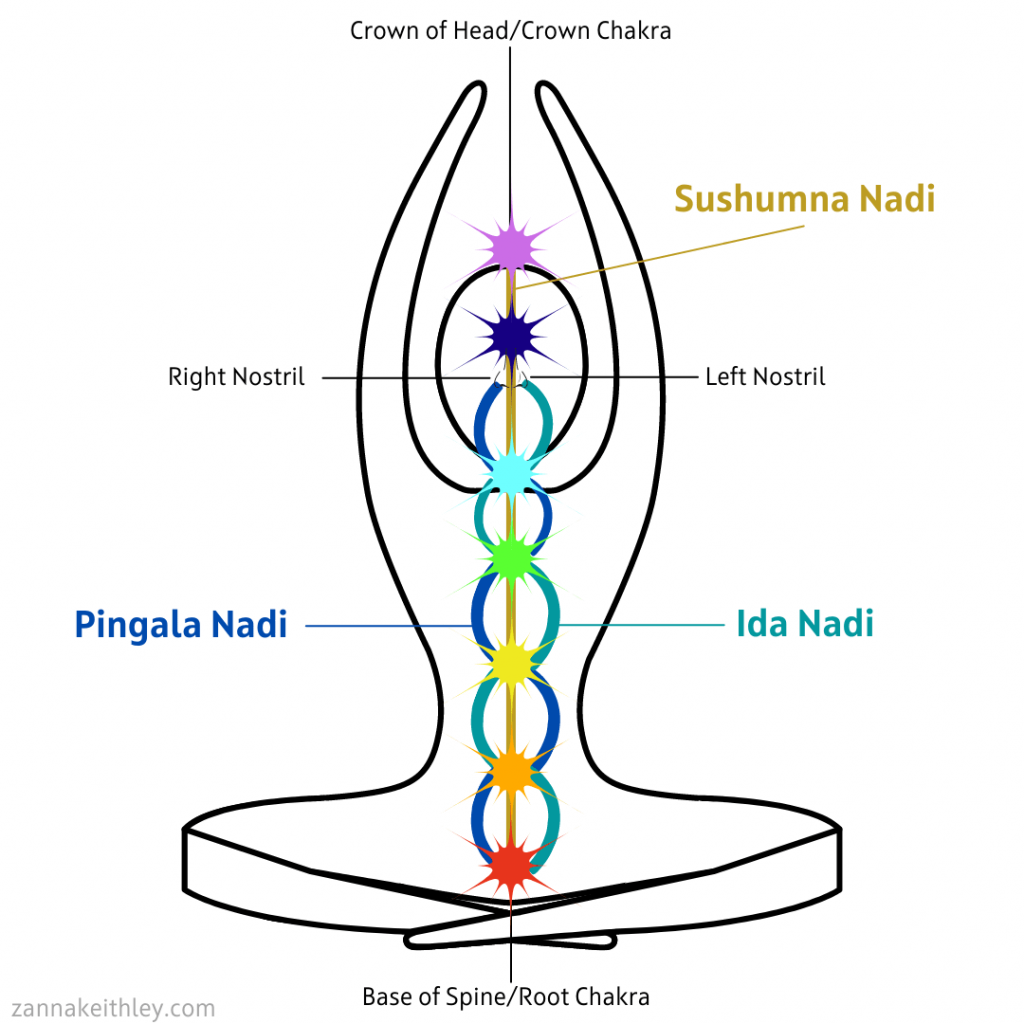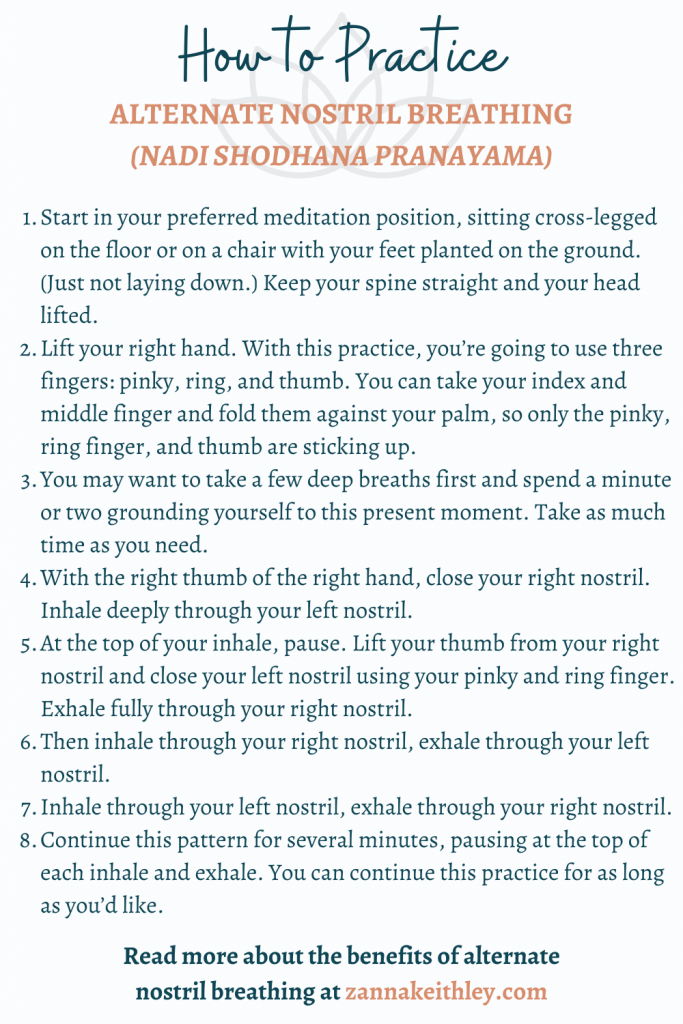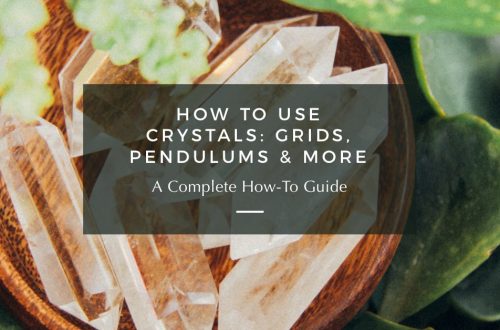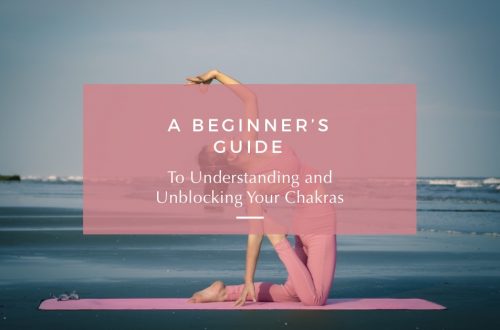-
Alternate Nostril Breathing Benefits & How-To Guide
In this article, discover the health benefits of alternate nostril breathing, a breath control practice in which you alternate inhaling and exhaling out of each nostril. You’ll also learn about the spiritual benefits of this practice and get a step-by-step guide on how to start today.

Pin this for later! Alternate Nostril Breathing (Nadi Shodhana Pranayama): Benefits & How-To Guide What is Alternate Nostril Breathing?
Alternate nostril breathing, also known as Nadi Shodhana or Nadi Shodhana Pranayama (translated to “subtle energy clearing breathing technique”), is a breath control practice commonly used in meditation and yoga. It’s often used as a way to clear blocked energy within your body as well as to cultivate a sense of calm and stillness within.
The practice of alternate nostril breathing is exactly as it sounds; it’s a breathing technique in which you alternate breathing in and out of each of your nostrils by closing off one of your nostrils with your fingers.
A typical practice might look something like this: close your right nostril and inhale through your left nostril. At the top of your inhale, switch and close your left nostril, exhaling out of your right nostril. Inhale through your right nostril, then close it and exhale out of your left nostril. Inhale through your left nostril, then close it and exhale out of your right nostril. Continue this pattern for the remainder of your practice.
Below, I’ll discuss this practice in greater detail. First, though, let’s look at the health benefits of alternate nostril breathing as well as the spiritual benefits of utilizing this powerful practice.
Health Benefits
So why practice alternate nostril breathing? Personally, I practice it as a way to calm my mind and ground myself to the present moment. When I sit down to meditate, I find it helpful to take a minute or two to practice alternate nostril breathing before I begin. This helps me to release distractions, clear my mind, and get centered as I start my meditation.
I also use alternate nostril breathing as a way to clear any blockages in my body’s energy channels, which I’ll discuss in more detail in the Spiritual Benefits section below.
Here are some of the commonly cited health benefits of alternate nostril breathing:
- Calms the mind
- Reduces anxiety
- Reduces stress
- Relaxes the body
- Improves cardiovascular function
- Improves lung function
- Promotes overall well-being
While the positive benefits of alternate nostril breathing have been promoted by yogis and meditation practitioners for years, there’s now some scientific evidence to back up these claims.
In this 2013 study, researchers found that those who practiced alternate nostril breathing showed a reduction in perceived stress levels and well as lower heart rates, respiratory rates, and blood pressure.
And in this 2017 study, researchers found that the practice of alternate nostril breathing (as well as other yogic breathing techniques) had a positive effect on respiratory endurance and the lung functions of competitive swimmers.
This 2018 review also shows how various yogic breathing techniques, including alternate nostril breathing, can be beneficial to one’s overall health and well-being.
If you have any questions about whether alternate nostril breathing could be helpful for you, please talk to your healthcare practitioner.

Spiritual Benefits
The spiritual benefits of alternate nostril-breathing can be linked to your chakra system, and more specifically, your nadis.
What are nadis? Nadis are the energy channels through which your life force flows; the word nadi is a Sanskrit word meaning “tube”, “channel”, or “flow.”
Many estimate that you have between 21,000 to 72,000 nadis in your body, though some believe there could be hundreds of thousands or even millions of nadis within each of us. Two of the most important nadis that you should know about are your Ida Nadi and your Pingala Nadi.
Your Ida Nadi is associated with your feminine energy and starts at the base of your spine (at your root chakra). It then runs through your core to your left nostril. It’s associated with right-brain dominance and what you might describe as your softer, darker energy.
Your Pingala Nadi is associated your masculine energy. It starts at the base of your spine (also at your root chakra) and runs through your core to your right nostril. (The Ida Nadi and the Pingala Nadi flow upwards criss-crossing each other at your chakra points.) It’s associated with left-brain dominance and what you might describe as stronger, lighter energy.
When your nadis become blocked, you may experience energy imbalances that can have negative effects on your physical, mental, emotional, and spiritual self. One way to clear energy imbalances is through alternate nostril breathing.
As you can see from the image above, your Ida Nadi runs through to your left nostril, and your Pingala Nadi runs through your right nostril. Alternate nostril breathing is a direct connection to these energy channels.
To know if either of these nadis might be blocked, you can do a quick test now. Gently press any of the fingers on your right hand against the right side of your nose, closing the right nostril. Place the fingers of your left hand below your left nostril. Exhale through your nose, noticing whether you can feel the warm air of your exhale against your left fingers. Then try this with your right nostril.
If you feel little or no air out of your left nostril, your Ida Nadi may be experiencing blockages. This represents your feminine energy, which is tied to surrendering, allowing, and just being.
If you feel little or no air out of your right nostril, your Pingala Nadi may be experiencing blockages. This represents your masculine energy, which is tied to hustling, achieving, and doing.
Neither side is more or less important than the other; when you find a balance between the two, you’re able to live your truest, most authentic life.
If you’re experiencing blockages to either of these energy channels, alternate nostril breathing can be a powerful tool to help clear these blockages.
However, I definitely encourage you not to stop there. It’s important to listen to your inner rhythm. For instance, if you’ve been in hustle mode for too long, your inner being may tell you it’s time to step back for a while and allow yourself to just be.
- You May Also Like: How To Create A Meditation Table (A Complete Guide)

Pin this for later! How to Practice Alternate Nostril Breathing
So are you ready to try alternate nostril breathing? Below, you’ll find step-by-step instructions to begin this powerful practice.
Please note that while my instructions have you starting out in a certain position, you don’t necessarily have to be in a meditation position to do this throughout the day. For instance, if you’re at work and want to practice alternate nostril breathing at your desk, that’s totally fine!
- You can start in your preferred meditation position, sitting cross-legged on the floor or on a chair with your feet planted on the ground. (Just not laying down.) Keep your spine straight and your head lifted.
- Lift your right hand. With this practice, you’re going to use three fingers: pinky, ring, and thumb. You can take your index and middle finger and fold them against your palm, so only the pinky, ring finger, and thumb are sticking up.
- You may want to take a few deep breaths first and spend a minute or two grounding yourself to this present moment. Take as much time as you need.
- With the right thumb of the right hand, close your right nostril. Inhale deeply through your left nostril.
- At the top of your inhale, pause. Lift your thumb from your right nostril and close your left nostril using your pinky and ring finger. Exhale fully through your right nostril.
- Then inhale through your right nostril, exhale through your left nostril.
- Inhale through your left nostril, exhale through your right nostril.
- Continue this pattern for several minutes, pausing at the top of each inhale and exhale. You can continue this practice for as long as you’d like.
As you continue to practice, try to follow your breath all the way from the base of your spine to your nostrils. Both your Ida Nadi and Pingala Nadi begin at the base of your spine and go through your left and right nostrils, respectively. Following the breath from the base of your spine through your nostrils allows you to connect with these energy channels, helping you to clear any blockages in either or both nadis.
Have you tried alternate nostril breathing? What benefits have you found through using breath control practices? Leave your comments and questions in the comment box below!
And for uplifting affirmations, chakra resources, meditation tools, self-love encouragement, and more, be sure to follow me on Pinterest and Instagram!
More Articles You May Like
- How to Protect Your Energy (7 Essential Practices)
- Sacred Self-Care For The 7 Chakras (A Complete Guide)
- Vision Board Ideas To Visualize Your Ideal Future (With Examples)
- 8 Powerful Guided Meditations For Manifesting Your Dreams
- 30 Journal Prompts For Self Growth (& Deeper Self-Love)

Pin this for later! Alternate Nostril Breathing (Nadi Shodhana Pranayama): Benefits & How-To Guide 
Zanna Keithley is an author, poet, and social media content creator who writes short prose dedicated to inspiring readers to follow their dreams, trust their intuition, and create beautiful and fulfilling lives. You can find her original writing on Instagram @zannakeithley.
-
10 Science-Backed Health Benefits of Meditation
If you’re thinking about starting a meditation practice or interested in finding out how your current practice is benefitting you, read below for the science on 10 of the most significant health benefits of meditation.

Pin this for later! 10 Science-Backed Health Benefits of Meditation Meditation
When I decided to try meditating for the first time, I was skeptical. Like many others, I was filled with doubts about whether I was even capable of meditating.
No way can I empty my brain of thoughts.
I’ll try it, but I’m not actually going to be good at it.
So I’m just supposed to do . . . nothing?
But through my meditation journey, I’ve learned that the goal of meditation isn’t to empty my brain of thoughts; the goal of meditation (mindfulness meditation, specifically) is to recognize (without judgment) when my thoughts have strayed and gently return to this present moment, over and over again.
Through this practice, I have learned how to become an objective observer of myself.
Which is a pretty big deal, after spending most of my life being a brutal self-critic.
To transform my default thoughts from inner bully to non-judgmental onlooker has been, well, pretty incredible.
In fact, these days, when I step out of my objective observer role, it’s to bring out my inner cheerleader. You see, most of my thoughts about myself now revolve around my own inherent worthiness. I now know I’m capable and deserving of living most honest and beautiful life I envision for myself.
I never imagined this path for myself when I reluctantly meditated for the first time several years ago.
However, I know that emphatic claims from family, friends, bloggers, and Instagram influencers can only go so far. Most of us need proof that meditation is so much more than just 10 minutes of sitting in silence.
That’s where the science comes in.
When I decided to tackle this subject, I had no idea what I’d find. Are there actually legitimate studies on the science-backed health benefits of meditation?
Yes, it turns out. Lots of them.
To say that I was blown away by the results would be an understatement; there are 1000s of studies and articles out there on the subject. (If you type “meditation benefits” in Google Scholar, you’ll get nearly 600,000 results.)
Below, I’ve compiled a list of 10 of the most compelling science-based health benefits of meditation.* These benefits come from multiple peer-reviewed studies and scholarly articles, and I’ve included links if you want to read deeper into each benefit.
*Please note that this content is for informational purposes only. It is not meant to substitute for medical advice, diagnosis, or treatment. If you have any questions regarding meditation and your personal health, please consult your doctor.
Health Benefit #1: Decreases Stress
This is a big one, and I list it first because decreased stress itself results in so many positive health benefits: improvements to your immune system, sleep quality, and weight management, to name a few.
First, I actually want to take a step back for a moment and say this: a little bit of stress in our lives isn’t actually such a bad thing.
Not that long ago, stress prompted our ancestors to run from the saber-toothed tigers. And now in our current world, stress propels us to swerve out of the way from that ongoing car. At its foundation, stress is meant to keep us alive.
But our bodies aren’t wired for the persistent stress we encounter today in work and our personal lives. And that’s why stress has become synonymous with a four-letter word in western culture.
But meditation can help.
Numerous studies have produced findings showing that meditation has a positive impact on a person’s stress levels.1 2 3 Studies even show that the use of a meditation app on your smartphone can significantly improve one’s stress levels. These apps may also generate an overall improvement in well-being, job strain, and perceptions of workspace social support.4 (Note that the meditation app Headspace offered free use of the app over the eight-week period in which the study occurred. However, it did not have any involvement in the actual study or conclusions formed.)
One study evaluated 351 full-time working adults with varying levels of meditation experience. The researchers found that those with more experience had higher levels of emotional intelligence, less stress, and better mental health.5
Health Benefit #2: Improves Mental Health
“Mental health” is a blanket term for one’s overall well-being, including our psychological, behavioral, and emotional states. Often, studies on the mental health benefits of meditation specifically focus on depression and anxiety.
One review that assessed 47 clinical trials and 3,515 total participants found evidence of improved anxiety and depression in patients over a period of just 8 weeks.6
Another study showed that meditation retreats resulted in reduced depression and anxiety as well as improved overall quality of life in its participants.7
Another two-year study followed 311 bipolar disorder II patients and found that meditation had positive effects on participants’ guilt, mood, and and feelings of helplessness.8
And lastly, another review found that meditation practices have been shown to be effective in reducing one’s anxiety symptoms.9
Health Benefit #3: Improves Immune System
A study published in the peer-reviewed journal Psychosomatic Medicine found that a mindfulness meditation practice can positively change immune function.10 Various other reviews and studies support these findings.11 12
One reason why meditation positively affects the immune system links back to #1 on this list: stress. Stress is known to suppress the immune system and can wreak havoc on the body. This results in chronic fatigue, metabolic disorders, and increased risk of heart disease, among other physical issues. By decreasing stress, a regular meditation practice can help your immune system work properly.
Health Benefit #4: Improves Brain Health
When it comes to our brain health, there’s promising evidence showing that meditation can have a significant positive impact.
One study found that meditation increased overall brain network integration. 13 And good news if you’re a non-experienced meditator: another study found that non-experienced meditators practicing just 13 minutes of meditation every day showed increases in mood and focus as well as increased working memory and recognition memory. And to top it off, these short meditation sessions produced similar positive behavioral effects as longer sessions. 14
Finally, another review assessed 13 separate studies, which all reported evidence of significant increases in grey matter in meditators’ brains.15 Grey matter is the outermost layer of the brain. It plays a vital role in how we function normally every day. While there’s still a lot of research to be done, this is compelling and hopeful evidence that meditation may positively impact and even offset neurodegenerative diseases.
Health Benefit #5: Decreases Blood Pressure
Interestingly, transcendental meditation often gets the spotlight when it comes to showing positive impacts of meditation on one’s blood pressure. One study looked at nine clinical trails and found evidence that transcendental meditation could significantly reduce systolic and diastolic blood pressure in a “clinically meaningful” way. 16 Another study found that a transcendental meditation practice can result in decreased blood pressure. The researchers noted these findings to be comparable to weight loss and exercise. 17
But it’s not just transcendental meditation that provides these positive results: another study found that non-transcendental meditation can also produce positive effects on blood pressure. 18
Health Benefit #6: Lengthens Attention Span
If you’re in school or have a highly attentive job, this one’s a big deal. One study found that a meditation practice helped to enhance nursing students’ attention span. It also reduced stress and increased mindfulness.19
There’s also good news if you’re unsure whether you want to commit long-term to a meditation practice. Another study followed participants for just five days and found they showed significantly improved attention spans (as well as decreased stress) when they incorporated a meditation practice into their routines. 20
Health Benefit #7: Improves Chronic Pain
Multiple studies provide evidence that mindfulness meditation can improve a person’s chronic pain symptoms.21 22 Additionally, meditation has shown to improve the psychological effects associated with chronic pain. This includes depression and overall quality of life. 23
Side note: If you suffer from chronic pain, check out the meditations on the Insight Timer app specifically created for those who are experiencing constant and extreme pain. Often, the teachers who release these meditations have experienced or are experiencing similar hardships. I know it seems impossible that meditation can make this pain go away, but know that these teachers see and feel your suffering. They’re there to guide you to a place where this pain no longer becomes your identity, and you can live in a space of deep calmness.
Health Benefit #8: Improves Sleep Quality
If you’re someone who struggles with getting a restful night’s sleep, meditation may help. One study looked at adults with moderate sleep disturbances and found that mindfulness awareness practices produced better results in improving the participants’ sleep than sleep hygiene education and suggests that these practices could be used to help remediate sleep problems and thus improve overall quality of life. 24
If you experience more prominent sleep problems, there’s some promising news for you, too: the American Academy of Sleep Medicine released findings showing that a meditation practice can be an effective treatment for insomnia. 25
Health Benefit #9: Increases Lifespan
Researchers at UC San Francisco found evidence that meditation may slow the rate of cellular aging. 26 But how exactly does that work? First, we need to understand the function of telomeres. Telomeres are the cap at each end of a chromosome that protects our chromosomes from deterioration. Over time, telomeres shorten and cause our cells to age. This is where you might have heard the concept of biological aging. When you hear that a 50-year-old is biologically only 30 years old, this is because the length of their telomeres is more aligned with what you would typically expect to see in a 30-year-old.
Constant stress is known to impact telomere length negatively. However, the researchers at UC San Francisco found that certain forms of meditation can have beneficial effects on telomere length and increase positive state of mind, thus preventing factors such as stress and depression from shortening telomere length.
Health Benefit #10: Enhances Self-Awareness
While my personal experience is only anecdotal, this is one that I can wholeheartedly speak to. As I mentioned in the intro, meditation has helped me to become an objective observer of myself. Do I still have negative and self-defeating thoughts? Absolutely. But instead of letting myself become consumed by those thoughts, I’m able to step back and notice when they’re happening. And then, after I notice without judgment, I have the power to redirect my thoughts to a more positive place.
The science on this topic suggests I’m not completely off-base for crediting this newfound self awareness to my daily meditation practice. There have been numerous studies and reviews that speak of the positive effect meditation has on one’s own self-awareness. 27 28 29 Another study shows that a mindfulness practice may help reduce “cognitive rigidity,” which allows for more creative problem solving. 30 By becoming more self-aware, you’re able to step back and see the bigger picture, thus allowing you to form different, more creative solutions rather than being blinded by your own past experiences.
Conclusion
While the list above includes ten of the most significant health benefits of meditation, there’s even more evidence out there showing that meditation has the potential to improve our overall mental, physical, and emotional well-being. On top of this (and something I can personally vouch for), it can also enhance one’s own self-image and self-worth. There’s still a ton of research to be done, but the research on the health benefits of meditation that has been done has been extremely promising and overwhelmingly positive.
Discover More About Meditation
- 7 Types of Meditation Practices for Beginners
- What is Mindfulness? Plus 15 Powerful Mindfulness Quotes
- A Beginner’s Guide to Chakras

Pin this for later! 10 Science-Backed Health Benefits of Meditation 
Zanna Keithley is an author, poet, and social media content creator who writes short prose dedicated to inspiring readers to follow their dreams, trust their intuition, and create beautiful and fulfilling lives. You can find her original writing on Instagram @zannakeithley.








